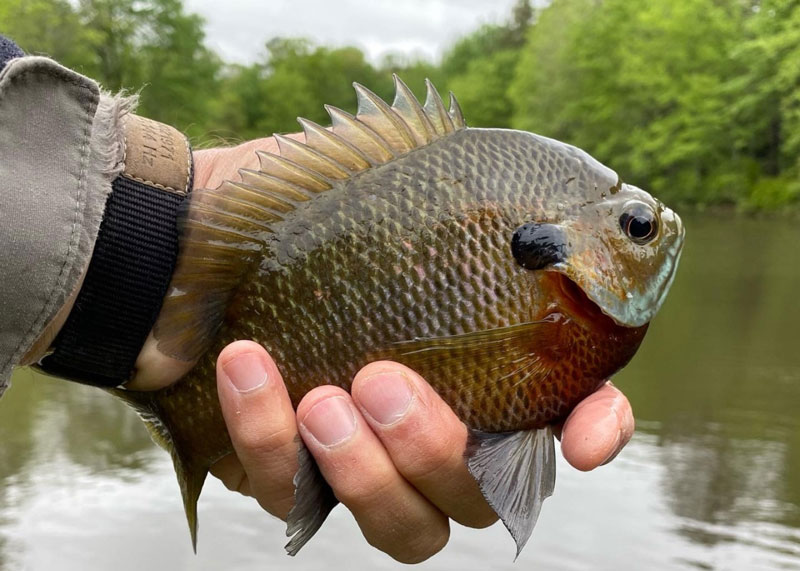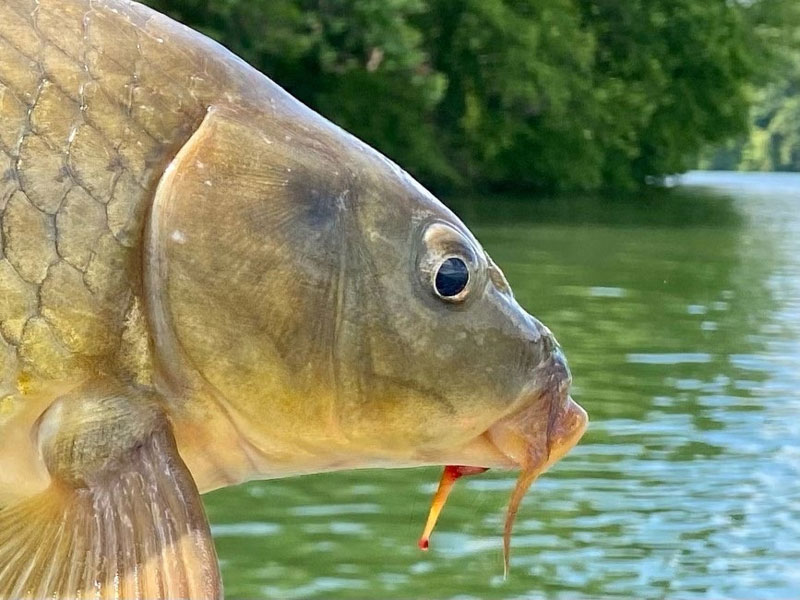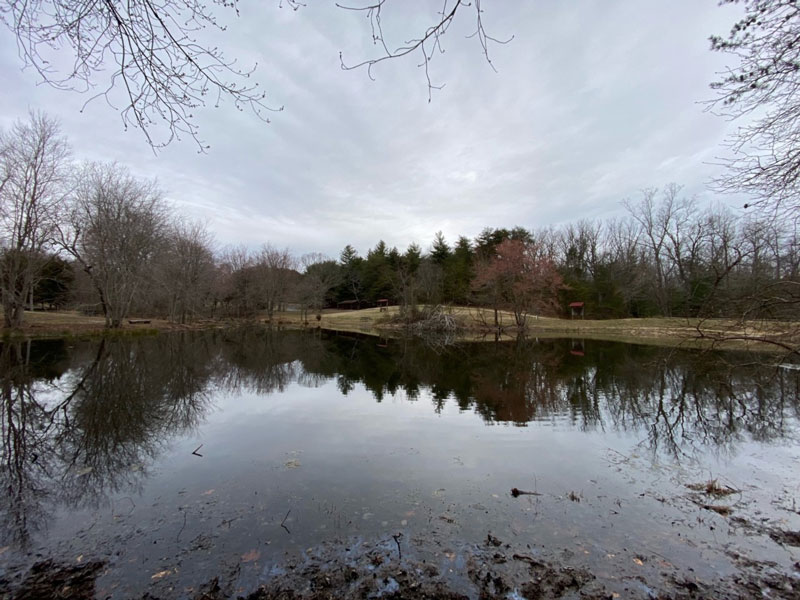Whether Alexandria is your atmosphere, Baltimore is your backyard, or Chesterfield is your corner of the world, if you enjoy chasing fish like bass, crappie, and bluegill, somewhere close by there’s a public pond that's worth a peek. You probably drive past it on a regular basis with little more than a glance, because that little watering hole couldn’t possibly represent a good fishing opportunity… or could it? As anyone who’s taken the time to cast a line into public ponds can tell you, these minor league bodies of water sometimes hold major league fish. But you can’t approach them as you would a lake or a river. Adjust your fishing techniques to match the body of water, however, and you can discover some fast-action fishing. Fail to do so, and those little ponds can drive you crazy in a big way.

A TIME LIMIT applies, when you’re hitting a small pond. These bodies of water get fished regularly, and since they’re so contained something as simple as walking the perimeter can be enough to spook every educated fish in attendance. Cast for an hour or two and you’ll likely have spooked most of the fish that you haven’t already caught. And when you do make a big catch you may want to head home, because a single fish thrashing on the surface is often enough to shut off the bites for 30 minutes or more. Don’t think of small public ponds as places you’ll spend an entire day, but instead, consider them for short angling diversions lasting just an hour or so on your way home from work, after school, or during a break in the weather.
WEEDBEDS can be key features and in some cases the weeds will occupy a giant area of the water. Fishing the edges of weeds is always a good bet, but in ponds that get really choked be sure to bring a weedless topwater offering like a frog or mouse. They’ll drive fish like bass and snakeheads nuts, and allow you to retrieve right through the thick stuff.
REED-COVERED shorelines can be magic, if you come prepared. Not because they hold so many fish, but because they deny access to 99 percent of the people who attempt to fish public ponds. As a general rule of thumb at any public access area the tough-to-reach spots are the best spots. So, bring a pair of waders with you and quietly stalk your way to inaccessible areas — you’ll likely discover where the biggest fish in the pond hang out.
CURRENT is a rare feature in ponds and moving water holds more oxygen than stagnant water, so fish will congregate where it does exist (especially during the hot summer months when oxygen levels drop). Many ponds, however, will have a bit of current either where a stream enters or a spillway drains. Either can hold the lion’s share of the fish.
DAMS generally mark the deepest spots in ponds, and particularly during the heat of summer the fish will often move as deep as possible to cool off. Always try probing the depths along a dam and if you have catfish in your sights, sink your baits here.
SPECIES diversity is not normally great, and in many ponds you’ll find just sunfish, catfish, and bass. Use this to your advantage by catching some small sunnies (or using a lure that closely mimics them) to target the bigger predators.
TERRESTRIAL baits and lures tent to shine in these waterways, because they’re often short on minnow and fry. As a result the fish are used to hunting insects, worms, and other non-aquatic critters. When fishing for bluegill, tiny poppers that mimic grasshoppers, plastic or hair ants, and dry flies will often out-catch lures like spinners or jigs. And when bass are the target most of the time you’ll be better off casting plastic worms than crankbaits. Similarly, if you’re fishing bait this is one of those times where ground worms may well produce more bites than minnow.
FEED THE DUCKS at urban ponds which families often visit. Like most creatures on planet Earth, fish are lazy at heart and will be happy to accept a free meal — including bread. At ponds where people regularly toss morsels out for the ducks, fish sometimes become acclimated to following the ducks and grabbing some free handouts for themselves. So bring along a heel or two, feed the ducks, and then start casting. Note: this is particularly effective for carp, which enjoy eating bread more than most other species; when you apply this tactic bait up with dough-balls. Bonus Tip: if there's a mulberry tree overhanging the water, expect to find carp there, too - they love mulberries.

While those local ponds may not represent a destination for day-long angling, as a temporary diversion they can excel. Don’t sell that little mud-hole short, because when you need a quick break from the “real” world, nothing does the trick like bending a rod from the shoreline of a pond.
Fishing Hotspot, or Not?
Naturally, you can’t count on each and every drainage ditch to hold 10-pound bass. Some small public ponds are winners, and others aren’t. Geographic location and fishing pressure are often characteristics we might use to rate a body of water, but they really don’t provide many clues when it comes to ponds, especially in urban areas. Instead, pay attention to:
- The shape of the fish you catch. When all the fish have huge heads and small bodies, you know the pond is overpopulated and underfed so you’re not likely to catch many decent fish in it.
- Whether or not the pond is on the trout stocking schedules. If it is, once the stocked trout are all caught out it may not offer the best action in the world. Stocking locations get hit a lot harder than other areas, and people often return to the same place out of habit. If a pond doesn’t appear on the schedule, however, chances are far fewer people fish it at any given time.
- Whether or not there’s any inaccessible shoreline. Areas where people can walk 360-degrees around the pond and hit all or virtually all locations don’t provide many places for the fish to hide.
- Depth is a critical feature, since it gives fish sanctuary in the heat of summer and the cold of winter. You can’t really judge depth until you try a pond out and take a few casts, but if you find there are large areas of deep water, there’s a better shot at finding good numbers and/or sizes of fish in that body of water.
- How well the area around the pond is manicured. If the grass is mowed down to the shoreline every week, weed killer gets sprayed around the parking lot, and flower beds line the paths, it may look nice… but there’s probably less food and lower water quality in that pond. Regular maintenance doesn’t necessarily guarantee a pond will be a bust but if you look around and see these conditions when you’re not getting any bites, it’s time to move on.
